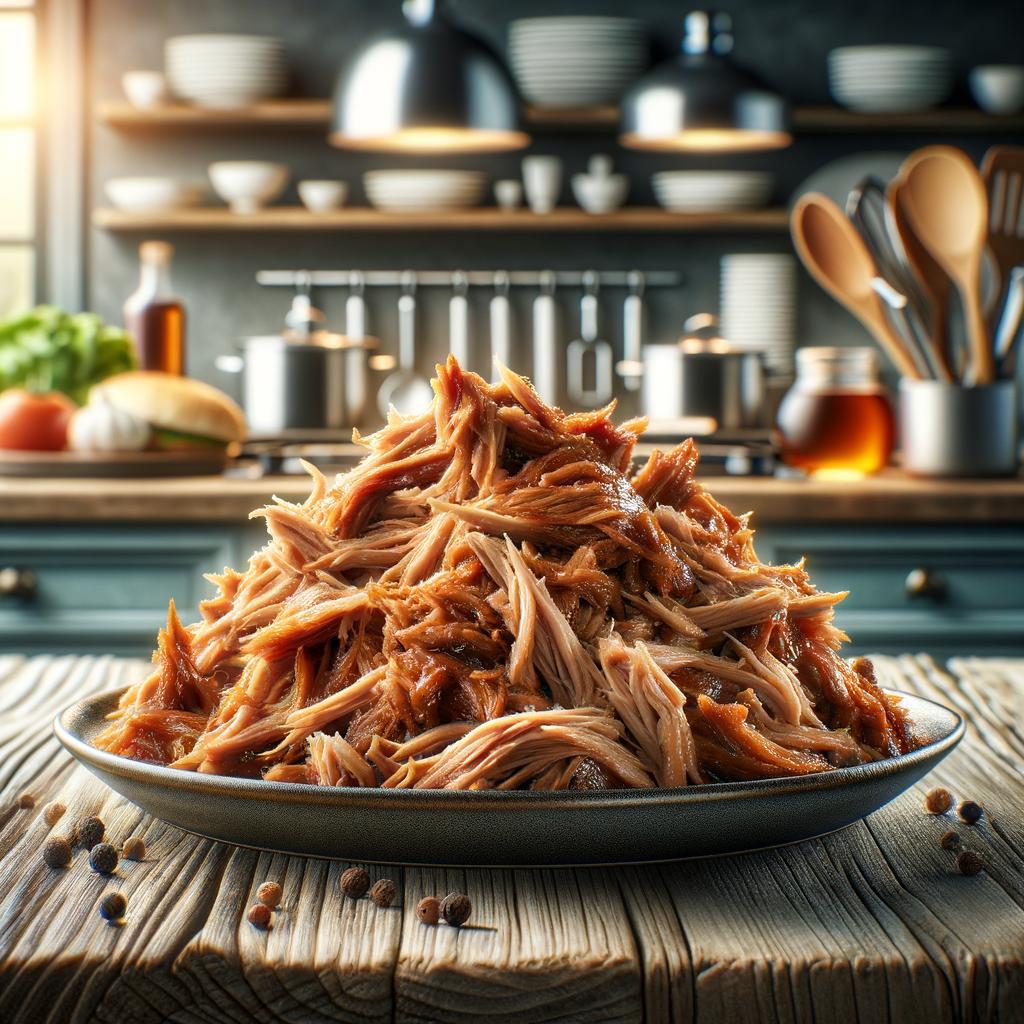Pulled Pork

Description
Pulled pork is a succulent and tender ingredient that has become a staple in many food cultures around the world. It is made by slow-cooking a large cut of pork, often the shoulder, until it is so tender that it can be easily shredded or "pulled" apart with a fork. The resulting meat is a tapestry of textures - the soft, juicy shreds of pork intermingle with crispy, caramelized edges, creating a delightful contrast in every bite. Pulled pork is often marinated or cooked in a myriad of sauces, which lend it a rich, robust flavor profile that can range from sweet and smoky to tangy and spicy. Its unique characteristic lies in its slow cooking process, which allows the flavors to deeply penetrate the meat, making it different from other similar ingredients.
Primary Uses
Pulled pork is a versatile ingredient that is commonly used in a variety of dishes across different cuisines. In the Southern United States, it is a key component of barbeque menus and is often served on a bun with a side of coleslaw. In Mexican cuisine, it is used in dishes like tacos and enchiladas. Beyond culinary uses, pulled pork also holds cultural significance. In the Southern United States, for example, barbequing pulled pork is a communal activity that brings families and communities together.
History
The history of pulled pork is steeped in tradition and resilience. It traces its roots back to the Southern United States, where African slaves were given less desirable cuts of meat, like the pork shoulder. They discovered that slow-cooking these tougher cuts over a low heat could transform them into a tender, flavorful dish. Over time, this cooking method evolved into what we know today as barbeque, and pulled pork became a symbol of Southern hospitality and community. The tradition of barbequing pulled pork continues to be passed down through generations, and its popularity has spread far beyond the South.
Nutritional Information
Pulled pork is a good source of protein, providing essential amino acids that our bodies need. It also contains vitamins like B6 and B12, which are important for brain health and energy production. However, it is also high in fat and cholesterol, so it should be consumed in moderation. Compared to other types of meat, pulled pork is higher in fat, but it also tends to be more flavorful due to the marbling of the meat. The nutritional profile can also vary depending on the sauce used, which can add additional calories, sugar, and sodium.

